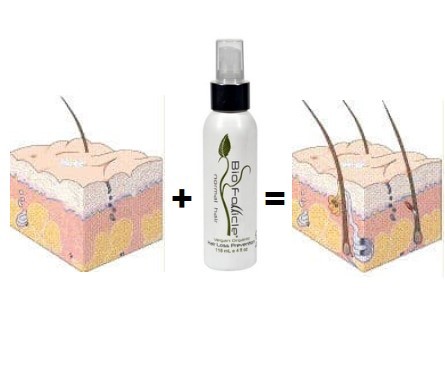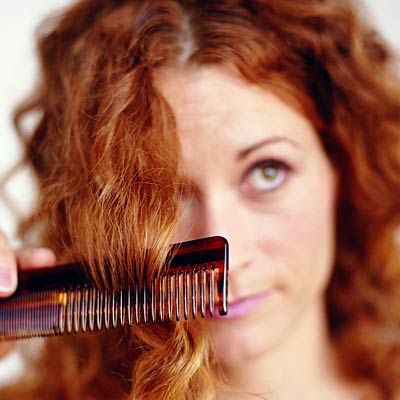Learn how to fix stunted hair growth with our comprehensive guide covering medical reasons, natural remedies, and effective treatments.
Stunted hair growth is a concern that affects many individuals, both men and women. Whether it’s medical reasons why my hair won’t grow or lifestyle factors, understanding the root cause is crucial for effective treatment. This issue can manifest in various forms, such as stunted hair growth in one spot or hair not growing past the shoulders. It’s not just an aesthetic concern but often a sign of underlying health issues or poor hair care practices.
Understanding the hair growth cycle is essential to tackling this problem effectively. The hair goes through different phases—Anagen, Catagen, and Telogen—that influence its growth and shedding. Any disruption in this cycle could lead to stunted growth. Knowing how these phases work can help you identify the best treatments and preventive measures for your specific situation. For those particularly concerned about why their hair seems to have stopped growing, understanding this cycle can offer valuable insights.
In this comprehensive guide, we will delve into the various aspects of stunted hair growth. From exploring medical reasons to discussing natural remedies like rosemary oil, we’ve got you covered. We will also look into how age affects hair growth and what you can do about it.
If you’re wondering why your front hair is not growing, we have a section dedicated to that as well. For a more targeted approach, check out our Folexin and Viviscal or read the Viviscal Before and After Reviews. Don’t let stunted hair growth hold you back; explore solutions that work for you.
- Importance of understanding the hair growth cycle and its phases: Anagen, Catagen, and Telogen.
- Various causes of stunted hair growth, including medical reasons, hormonal changes, and environmental factors.
- Preventive measures like avoiding split ends and maintaining a proper hair care routine.
- Natural remedies such as rosemary oil and scalp massages.
- Medical treatments like Minoxidil and Finasteride, and the role of supplements in hair growth.
By the end of this article, you’ll have a well-rounded understanding of how to fix stunted hair growth, be it for males or females, and how to approach it from both a medical and natural standpoint. So, let’s dive in and unravel the mystery behind stunted hair growth.
How to Fix Stunted Hair Growth: Overview
Stunted hair growth can be a disheartening experience, affecting both men and women. However, it’s crucial to remember that this is often a temporary condition that can be improved with the right strategies. This section delves into practical tips and remedies to help you overcome stunted hair growth effectively.
Maintain a Healthy Scalp
- Cleanse Properly: A clean scalp is the foundation of healthy hair growth. Opt for sulfate-free shampoos and conditioners that not only cleanse but also nourish your hair. A clean scalp encourages better blood circulation, which in turn stimulates hair follicles.
The Power of Scalp Massages
- Stimulate Blood Flow: Incorporate scalp massages into your nightly routine. Use hair oils like castor oil to massage your scalp a few nights a week. This practice enhances blood circulation, which is crucial for nourishing the hair follicles and encouraging growth.
Minimize Hair Manipulation
- Simpler Hairstyles: If you’re experiencing stunted growth, your hairstyling habits might be to blame. Opt for simpler hairstyles like two-strand twists and other protective styles. These require less manipulation, reducing the risk of hair breakage and single-strand knots.
Limit Heat Exposure
- Heat Protectants: Excessive heat can weaken your hair strands, leading to breakage and stunted growth. If you must use heat styling tools, always use a heat protectant spray and keep the temperature settings low.
Natural Remedies for Enhanced Growth
- Essential Oils: Natural oils like coconut oil, castor oil, and olive oil are excellent for promoting hair growth. These oils nourish the scalp and strengthen hair strands.
- Aloe Vera: This natural remedy is rich in vitamins and minerals that strengthen the hair follicle and improve scalp health.
Track Your Progress
- Document with Photos: Hair growth plateaus can be discouraging, but they are often temporary. Take pictures at the beginning of your hair growth journey and continue to document your progress monthly. This will help you stay motivated and allow you to adjust your hair care routine as needed.
Understanding the Hair Growth Cycle
The hair growth cycle is a complex process that plays a pivotal role in determining the health and length of your hair. Understanding this cycle is crucial for anyone grappling with stunted hair growth. The cycle consists of three main phases: the Anagen, Catagen, and Telogen phases. Each phase has its unique characteristics and functions, and disruptions in any of these can lead to issues like stunted hair growth in one spot or hair not growing past the shoulders.
The Anagen Phase is the growth stage where hair follicles are active, and new hair strands are formed. This phase can last anywhere from two to seven years, depending on various factors like genetics, age, and health. During this period, it’s essential to nourish the scalp and hair with natural oils for hair growth like rosemary oil to ensure optimal growth. The Catagen Phase is a transitional period that lasts for about two to three weeks. In this phase, hair growth slows down, and the hair follicle shrinks. Finally, the Telogen Phase is the resting stage, lasting around three months. It’s during this phase that hair shedding occurs, making way for new hair to grow.
For those who are concerned about why their hair seems to have stopped growing, understanding these phases can offer actionable insights. If you’re looking for products that can support your hair during its growth cycle, consider our Scalp Exfoliation Brush for a healthier scalp or explore Biotin Hair Growth Before and After Pictures to see real results. Take control of your hair growth by understanding its natural cycle and providing it with the right care.
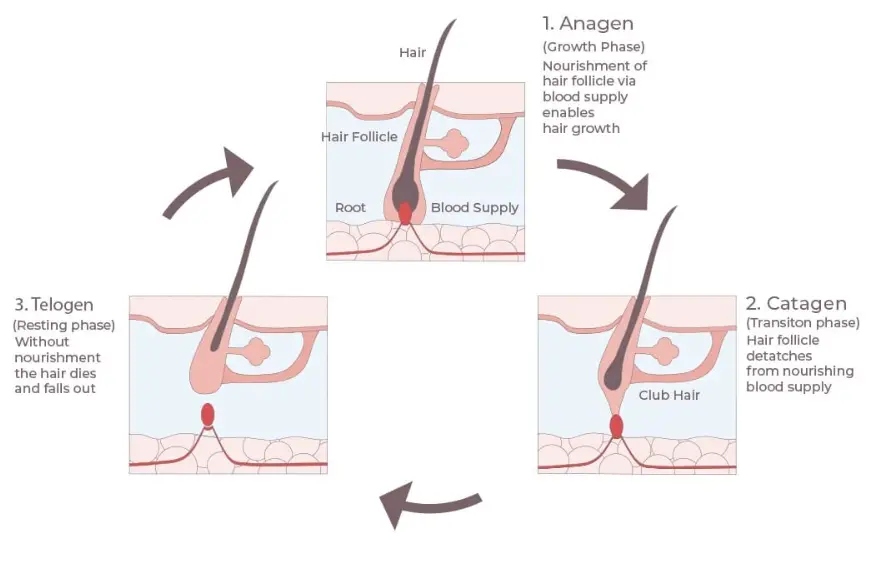
By grasping the intricacies of the hair growth cycle, you can better diagnose the causes of stunted hair growth and take appropriate measures. Whether it’s incorporating scalp massages for hair growth or making dietary changes to promote hair growth, understanding these phases gives you the tools to take action effectively.
Causes of Stunted Hair Growth
Understanding the root causes of stunted hair growth is the first step in finding an effective solution. There are various factors that can inhibit hair growth, and they can be broadly categorized into medical, hormonal, age-related, and environmental factors. Knowing what’s causing your hair to stop growing can help you target the problem more effectively.
Medical Reasons Why Hair Won’t Grow
Certain medical conditions and treatments can severely impact hair growth. Conditions like alopecia, thyroid disorders, and scalp infections can lead to stunted growth or even hair loss. Medications for cancer, depression, and high blood pressure can also have similar side effects. It’s crucial to consult a healthcare provider for a proper diagnosis and treatment plan.
Hormonal Changes
Hormones play a significant role in hair growth. Imbalances in hormones like estrogen, testosterone, and thyroid hormones can lead to stunted hair growth. Pregnancy, menopause, and certain medications can also cause hormonal fluctuations affecting hair health.
Age-Related Factors
As people age, the rate of hair growth tends to slow down. This is often due to a decrease in the duration of the Anagen phase of the hair growth cycle. Factors like reduced blood circulation and lower hormone levels contribute to this slowdown.
Environmental Factors
External factors like pollution, exposure to harsh chemicals, and even the water quality in your area can affect hair growth. Overstyling and excessive heat treatments can also lead to damaged hair and a stunted growth cycle.
For those who are struggling with medical reasons why their hair won’t grow, we offer a range of solutions that can help. Check out our More Hair Naturally Reviews for natural treatment options or explore our Theradome Pro LH80 for a high-tech approach. Don’t let these causes hold you back; take proactive steps to promote healthy hair growth today.
By identifying the root causes of your stunted hair growth, you can tailor your treatment approach for more effective results. Whether it’s adjusting your lifestyle to mitigate environmental factors or seeking medical advice for hormonal imbalances, understanding these causes empowers you to take control of your hair health.
Identifying Stunted Hair Growth
Recognizing the signs of stunted hair growth is crucial for implementing effective treatment strategies. The symptoms can manifest differently in males, in specific spots on the scalp, or even in the front hair region. Being aware of these variations can help you tailor your approach to hair growth solutions more effectively.
In Males
For males, stunted hair growth often appears as thinning hair or receding hairlines. It can be exacerbated by factors like genetics, hormonal imbalances, and age. Men may also experience stunted hair growth in one spot, often due to localized scalp issues or hair follicle damage.
In One Spot
Experiencing stunted growth in one specific area can be particularly concerning. This localized issue could be due to scalp infections, alopecia areata, or even mechanical damage from tight hairstyles. It’s essential to consult a healthcare provider for a proper diagnosis and targeted treatment.
In Front Hair
Stunted growth in the front hair region is often noticeable and can be distressing. Causes can range from overstyling and heat damage to more serious conditions like frontal fibrosing alopecia. Specialized treatments and care routines are often required to address this issue effectively.
If you’re a male dealing with stunted hair growth or facing issues with growth in specific areas, we have resources that can help. Explore our Hair Growth Calculator to gauge your growth rate or read our Nutrafol vs Folexin comparison for supplement options. Take the first step towards healthier hair by identifying the root cause and exploring targeted solutions.
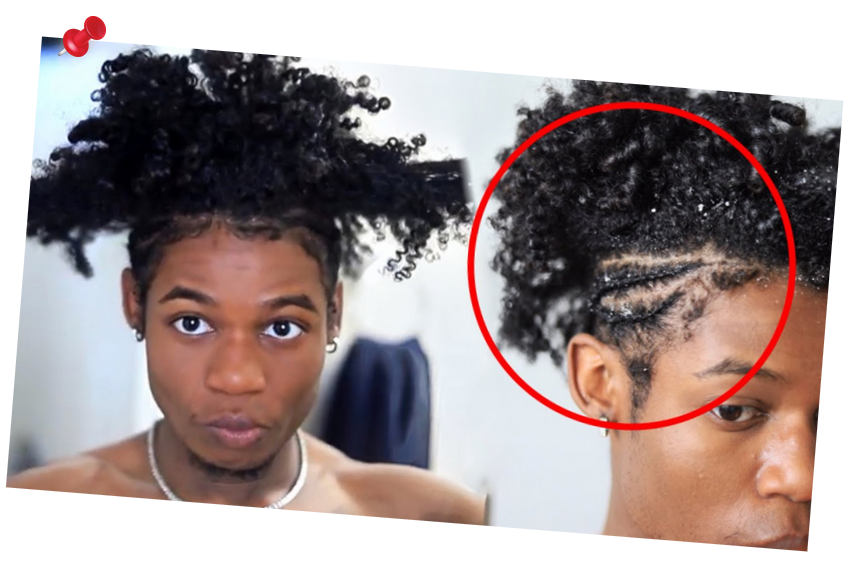
By pinpointing the specific areas and conditions causing your stunted hair growth, you can choose the most effective treatments and preventive measures. Whether you’re dealing with localized issues or broader challenges, understanding these signs is the first step in reclaiming your hair health.
Natural Remedies to Promote Hair Growth
When it comes to addressing stunted hair growth, natural remedies offer a gentler, yet effective approach. From essential oils to dietary changes, these remedies can stimulate hair growth without the side effects often associated with medical treatments. In this section, we’ll explore some of the most effective natural remedies, including rosemary oil, scalp massages, and dietary changes.
Rosemary Oil
Rosemary oil is a popular natural remedy for promoting hair growth. Rich in antioxidants and anti-inflammatory properties, it stimulates blood flow to the scalp, nourishing hair follicles. It’s also known to strengthen hair, making it less prone to breakage. To use rosemary oil effectively, mix a few drops with a carrier oil like coconut oil and massage it into the scalp. Leave it on for at least 30 minutes before washing it off.
Scalp Massages
Scalp massages are another effective way to promote hair growth. Massaging the scalp stimulates blood circulation, which in turn nourishes the hair follicles. This can be particularly beneficial for those experiencing stunted hair growth in one spot. For best results, use natural oils like rosemary or lavender oil during the massage.
Dietary Changes
Your diet plays a significant role in hair health. Nutrients like biotin, zinc, and omega-3 fatty acids are essential for hair growth. Incorporating foods rich in these nutrients can make a noticeable difference. Consider adding fish, nuts, and leafy greens to your diet for better hair health.
If you’re interested in natural remedies, we have a wealth of resources to guide you. Learn more about the benefits of rosemary oil in our natural herbs that promote hair growth, or discover the right way to massage your scalp with our Scalp Exfoliation Brush. Don’t miss out on these natural ways to boost your hair growth; explore these remedies today.

By embracing these natural remedies to promote hair growth, you’re taking a holistic approach to solving the problem of stunted growth. Whether you’re dealing with medical reasons why your hair won’t grow or looking for ways to enhance your existing hair care routine, these natural solutions offer a viable alternative worth exploring.
Medical Treatments
While natural remedies offer a holistic approach, medical treatments provide a more targeted solution for stunted hair growth. These treatments are often backed by scientific research and can be particularly effective for those dealing with more severe cases. In this section, we’ll delve into some of the most commonly prescribed medical treatments like Minoxidil, Finasteride, and supplements specifically designed for hair growth.
| Treatment | Mechanism of Action | Application | Side Effects | Efficacy |
|---|---|---|---|---|
| Minoxidil | Vasodilator that stimulates hair follicles | Topical solution or foam | Scalp irritation, unwanted hair growth | Effective for both men and women |
| Finasteride | Inhibits DHT hormone responsible for hair loss | Oral tablet | Sexual dysfunction, depression | Generally more effective in men |
Minoxidil
Minoxidil is one of the most well-known treatments for hair loss and stunted growth. It’s a topical solution that stimulates blood flow to the hair follicles, encouraging growth. While it’s generally well-tolerated, it’s essential to consult a healthcare provider for proper dosage and application guidelines.
Finasteride
Finasteride is another FDA-approved medication commonly used to treat male pattern baldness. It works by inhibiting the hormone responsible for hair loss, thus promoting growth. However, it’s crucial to note that Finasteride is typically not recommended for women and can have side effects like reduced libido.
Supplements for Hair Growth
There are various supplements for hair growth available on the market. These often contain essential nutrients like biotin, zinc, and folic acid that support hair health. While supplements can be a convenient way to fill nutritional gaps, it’s advisable to consult a healthcare provider for personalized recommendations.
If you’re considering medical treatments, we have comprehensive reviews and comparisons to help you make an informed decision. Check out our Allurium Hair Growth Serum Reviews for insights on a topical solution or explore do any vitamins actually work for a breakdown of popular supplements. Take the guesswork out of choosing a medical treatment; explore these options today.

By opting for medical treatments, you’re taking a targeted approach to tackle the issue of stunted hair growth. Whether you’re dealing with age-related factors or seeking to address why your hair won’t grow past your shoulders, these medical options offer a robust solution backed by science.
Preventive Measures
Prevention is often better than cure, especially when it comes to stunted hair growth. By adopting preventive measures, you can not only enhance the health of your hair but also avoid the pitfalls that lead to stunted growth. In this section, we’ll focus on two key aspects: how to prevent split ends and establishing a proper hair care routine.
How to Prevent Split Ends
Split ends are a common culprit behind stunted hair growth. They weaken the hair structure, making it more susceptible to breakage. To prevent split ends, it’s crucial to trim your hair regularly and avoid excessive heat styling. Using a heat protectant spray and opting for natural drying methods can also make a significant difference.
Proper Hair Care Routine
A proper hair care routine is essential for preventing stunted growth. This includes regular shampooing and conditioning with products suited for your hair type. Additionally, avoid tight hairstyles that can cause tension on the scalp and lead to hair loss. Incorporating scalp massages and oil treatments can further nourish the hair follicles and promote growth.
If you’re looking for more tips on preventive measures, we’ve got you covered. Check out our guide on the Best Hair Growth Kit for a comprehensive set of tools and products, or read our More Hair Naturally Reviews for insights on natural preventive solutions. Don’t wait for the problem to escalate; take preventive measures today.
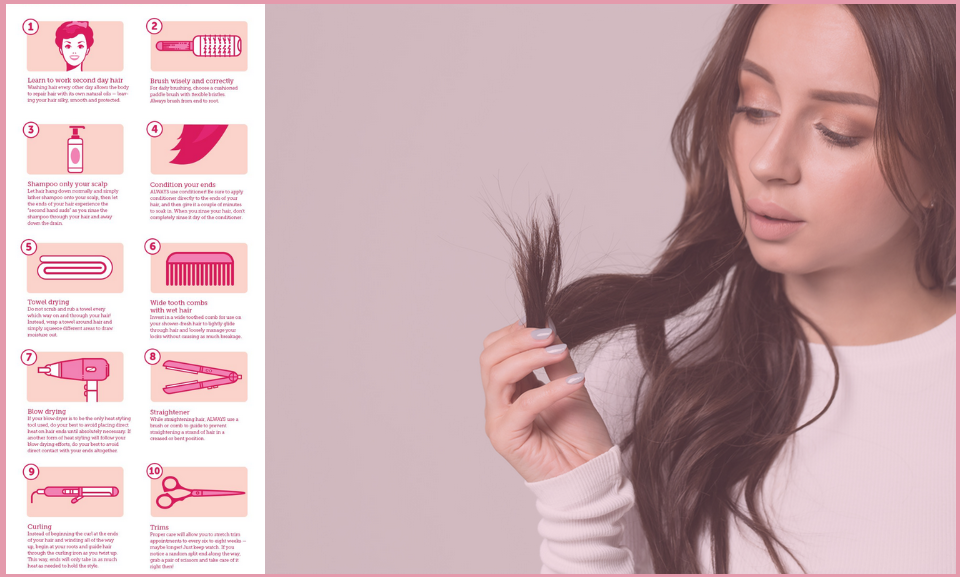
By implementing these preventive measures, you’re taking proactive steps to ensure the health and growth of your hair. Whether you’re concerned about split ends or looking to establish a proper hair care routine, these tips offer a practical guide to maintaining healthy hair and preventing stunted growth.
FAQs
In the quest for healthier, longer hair, several questions often arise. This FAQ section aims to address some of the most commonly asked questions about hair growth, providing you with actionable insights and solutions.
How often should I apply hair oil for hair growth?
The frequency of applying hair oil for hair growth varies depending on individual needs and the type of oil used. Generally, it’s recommended to oil your hair 1-2 times a week. Oiling nourishes the scalp and can be particularly effective when combined with scalp massages.
At what age does hair growth stop in females?
Hair growth does not necessarily stop at a specific age in females, but it may slow down due to hormonal changes, particularly after menopause. However, factors like diet, lifestyle, and medical conditions can also influence hair growth at any age.
Why won’t my hair grow past my shoulders?
If your hair won’t grow past your shoulders, it could be due to a variety of factors such as split ends, breakage, or even hormonal imbalances. A comprehensive hair care routine and medical treatments can often resolve this issue.
For those who have more questions or need further clarification, we have detailed articles that can help. Learn about the science of hair growth with our Hair Growth Calculator or explore the role of biotin in our Biotin Hair Growth Before and After Pictures. Get all your questions answered; dive deeper into these topics today.
By addressing these frequently asked questions, this section aims to dispel myths and provide evidence-based answers. Whether you’re wondering about the frequency of applying hair oil or curious about age-related changes in hair growth, these FAQs offer a quick yet comprehensive guide to understanding the complexities of hair growth.
Conclusion
Navigating the complexities of hair growth can be overwhelming, but armed with the right information and strategies, achieving healthy, long hair is entirely possible. This article has covered a wide range of topics, from understanding the hair growth cycle to exploring both natural and medical treatments for stunted hair growth.
Final Thoughts and Recommendations
For those who are serious about tackling the issue of stunted hair growth, a multi-faceted approach is often the most effective. Combining preventive measures with targeted treatments can yield the best results.
If you’re looking for more in-depth information, we have several resources that can help. For a comprehensive set of tools, check out our Best Hair Growth Kit. If you’re considering a serum, our Zenagen Thickening Hair Serum offer valuable insights. And for those curious about the impact of biotin, our biotin hair gummies can provide a visual guide. Take the next step in your hair growth journey; explore these resources today.
By focusing on these key points and following our final recommendations, you’re well on your way to overcoming the challenges of stunted hair growth and achieving the luscious locks you’ve always desired.
- AI Powered Bald Filter Online 2024: See Yourself with No Hair! - January 19, 2024
- Harklinikken Bad Reviews 2024: Analyzing Negative Feedbacks - January 18, 2024
- How to Get the Alex Eubank Hair | Step-By-Step Tutorial 2024 - January 18, 2024



